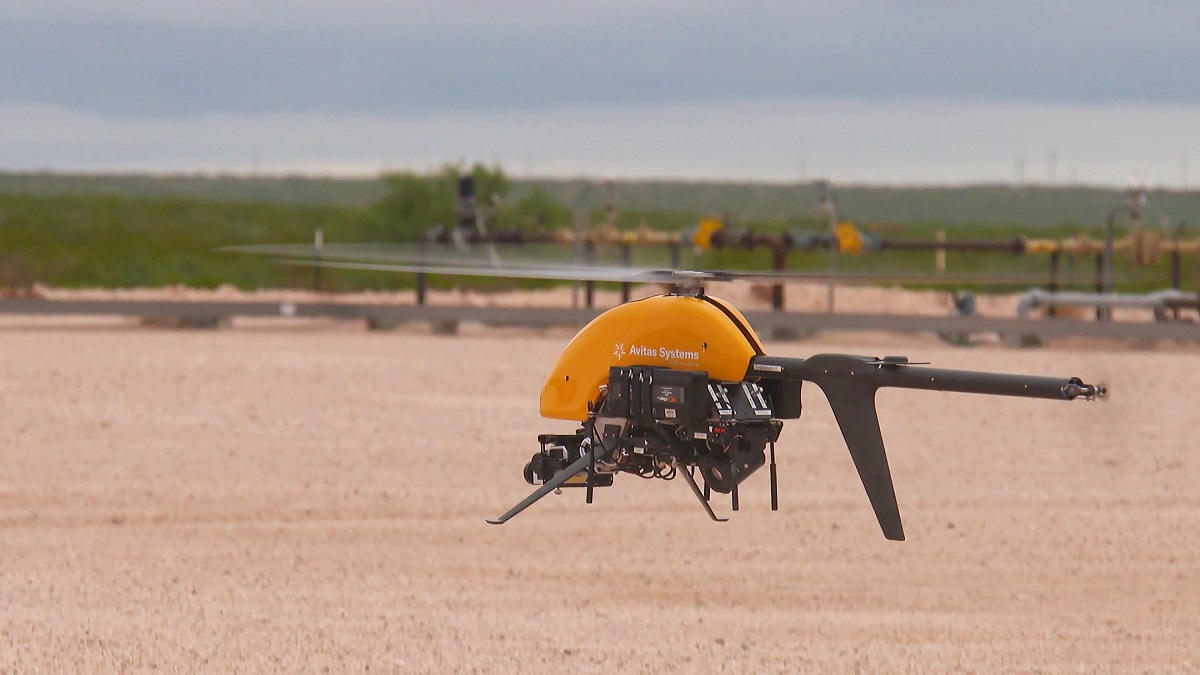Since the implementation of Part 107, the drone industry has been lobbying the FAA to make the airspace less restrictive so that operations like flying over people are more easily enabled. The limitations on heavier aircraft have also gotten many operators to express frustration, but there's been tremendous progress on all these fronts. With the FAA issuing waivers to more and more companies to perform these flights and demonstrate they can be executed safely in the wider context of the national airspace, things have begun to change, and a recent news item showcases exactly how far things have come in that regard.
On October 16th, Avitas Systems announced that it had received FAA approval to fly an unmanned aerial system (UAS) beyond visual line of sight in Loving County, Texas. This waiver authorizes the GE venture company to fly a UAS over 55 pounds at low altitudes without a visual observer for industrial inspection. It is the first FAA-approved civil use of BVLOS with radar.“Being the first FAA-approved civil use of BVLOS with radar is a significant achievement for Avitas Systems and our customers,” said Brad Tomer, Interim CEO for Avitas Systems. “Using a technology-centric and collaborative approach is what drives our ability to transform industrial operations and provide safer and more efficient services. We worked closely with Shell Oil Company (Shell) for the use case, location, and to show how this technology can improve industrial operational efficiency and safety. The FAA provided the necessary feedback to enable our team to design a system that safely meets the aviation regulatory requirements. And, we had system design, safety, test, analysis, and validation support from AiRXOS, also a GE venture company.”The FAA’s permission allows Avitas Systems to use a radar system and enhanced operational procedures to provide an enhanced level of safety. The extended range of BVLOS operations allows for safer and more efficient monitoring of critical industrial infrastructure, including well pads separated by rough terrain. Better turnaround of inspection data leads to cost efficiency and faster facility repairs, especially when compared to traditional methods such as driving to each individual inspection site. When the Avitas Systems technology is combined with advanced analytics, it enables more accurate and efficient monitoring/detection and repair of leaks. It also reduces road safety-related risks by minimizing the number of miles driven each day.“Drones are already an integral part of Shell’s digital operations, with missions flown daily across our global footprint,” said Bruce Culpepper, U.S. Country Chair for Shell. “Now, with the FAA’s approval and with the assistance of Avitas Systems, we can fly over a larger area of our Permian Basin operations to conduct aerial monitoring of our oil and gas infrastructure. This includes leak detection and data gathering needed to make more efficient operational decisions, which will result in improved environmental performance with less strain on road infrastructure in the Permian Basin. This is a tremendous achievement made possible through collaboration with the FAA, GE, Avitas Systems, and Shell, and represents the future of drone-based surveillance technology in the U.S. Unconventionals fields of the future.”BVLOS flights enable data collection in difficult, hard-to-reach places, while also keeping inspectors out of harm’s way. Avitas Systems integrates pilot-in-the-loop safety measures, using trailer-mounted radar, to ensure enhanced situational awareness during flights. The UAS use robust data links, so their sensors upload live streams of inspection data in real time to the Avitas Systems Platform for review and analysis while safely controlling the flight operation.“We received the FAA’s permission due to our systematic approach of using airspace management with a unique combination of proven UAS radar and communications technologies, which demonstrate that safety is our top priority,” said Michael Clatworthy, Director of Flight Operations for Avitas Systems. “This is the first step in our approach to larger-scale BVLOS inspection operations.”Waivers like the one obtained by Avitas are available to those organizations that can prove that their operations are safe and that protocols are put in place to avoid accidents or incidents with ground objects, other UAVs and especially manned aircraft sharing the airspace. They're of critical importance since they demonstrate to the FAA that UAV flights BVLOS can be safe while opening up countless opportunities for individual organizations as well as the industry as a whole.Subscribe
The information you submit will be stored and used to communicate with you about your interest in Commercial UAV News. To understand more about how we use and store information, please refer to our privacy policy.
October 19, 2018
Avitas Receives First FAA Civil BVLOS Approval Using Radar















Comments